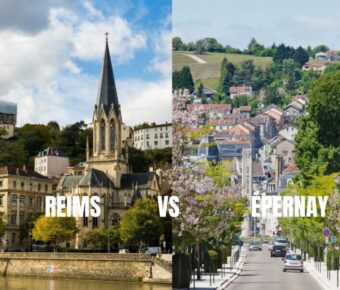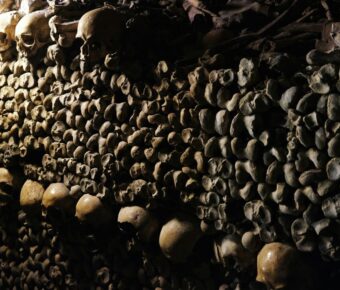Siena vs Perugia: 7 Key Differences Every Traveler Should Know
Picking between Siena and Perugia? Honestly, it’s a tough call—it really depends on your travel style. Siena greets you with majestic medieval squares, Gothic spires, and pure Tuscan tradition, while Perugia brings a laid-back Umbrian mood, a burst of student energy, and those wild underground streets. Both cities are walkable, old-world, and loaded with charm, but wow, they have totally different personalities.
I’ve strolled Siena’s Piazza del Campo early in the morning and it almost feels too perfect, like you’re in a movie set or a history book. Perugia caught me off guard with its mix of ancient arches and a nightlife that just doesn’t quit—thanks, university crowd. Siena comes across as polished and a bit formal. Perugia? More casual, more lived-in, and maybe a bit messier in the best way.
Still can’t decide? Ask yourself if you’re craving those classic Tuscan views and a city where tradition is everything, or if you want a hilltop town buzzing with international students and a more relaxed vibe. Either way, you’ll soak up central Italy’s culture in a way you can’t get anywhere else.
Table of Contents
- Key Takeaways
- Location and Accessibility
- Geographical Setting
- Transport Connections
- Proximity to Major Cities
- Cultural Atmosphere
- Local Attitudes and Hospitality
- Student and Expat Communities
- Traditions and Social Life
- Historical Significance
- Medieval Heritage
- Notable Landmarks
- Influence on Regional History
- Art, Architecture, and Attractions
- Iconic Sights in Siena
- Must-See Spots in Perugia
- Museums and Galleries
- Food and Nightlife
- Local Cuisine
- Bars and Nightlife Scene
- Events and Festivals
- Palio di Siena
- Umbria Jazz Festival
- Other Annual Celebrations
- Living and Studying
- Cost of Living
- University Life
- Safety and Quality of Life
- Frequently Asked Questions
- What unique architectural features distinguish the Siena Cathedral from Perugia’s San Lorenzo Cathedral?
- Can you recommend hidden gems for dining in both Siena and Perugia that capture the essence of each city’s culinary traditions?
- What are the best strategies for experiencing the Palio di Siena and Perugia’s Eurochocolate festival like a local?
- Could you share insights on the lesser-known historical sites in Siena and Perugia that tell a deeper story of the region’s past?
- What are the most scenic and less-traveled routes to explore between Siena and Perugia by car or bike?
- How do the art scenes in Siena and Perugia differ and what off-the-beaten-path galleries should art lovers visit?
- Book Your Dream Experience
- More Travel Guides
Key Takeaways
- Siena feels historic and formal; Perugia brings lively, casual energy
- Architecture, culture, and food differ in each city
- Your pick depends on whether you’re after tradition or a youthful scene
Location and Accessibility
Siena and Perugia both sit in central Italy, but trust me, they don’t feel the same when you’re actually there. Siena’s all about those medieval lanes and rolling Tuscan hills. Perugia sprawls across Umbrian ridges and has a surprisingly modern transport setup. How you get in and out of each city can really shape your trip.
Geographical Setting

Siena sits right in the heart of Tuscany, surrounded by vineyards and countryside that honestly look straight out of a postcard. The city’s compact, built on some seriously steep hills—walking around is rewarding but, yeah, it’ll tire you out. Most of the historic center is off-limits to cars, so expect to explore on foot.
Perugia perches high on a hilltop in Umbria. It’s more spread out than Siena and has escalators, elevators, and even a quirky little tram system to help you tackle those slopes. That’s a relief if you’re not up for endless stair-climbing.
Both cities are beautiful, just in totally different ways. Siena feels like a medieval time capsule. Perugia weaves together old streets and modern touches. If you’re lugging heavy bags, you’ll love that Perugia has practical perks like escalators and luggage storage close to transport hubs.
Transport Connections
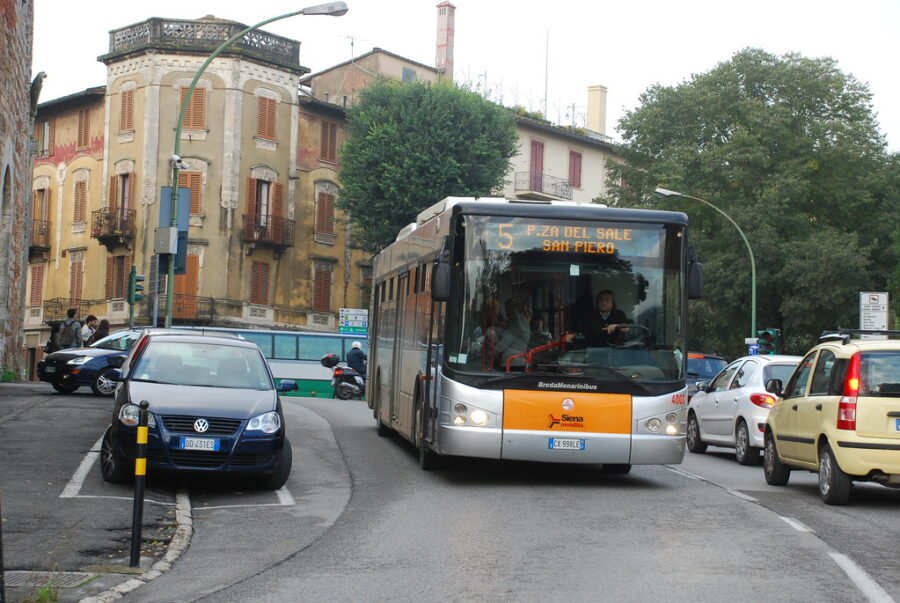
Siena doesn’t have a train station in the center. You’ll usually get there by bus—especially from Florence. The train station sits outside the city, so you’ll need a bus or taxi to reach the old town. It’s doable, but not exactly seamless.
Perugia connects better by train, with direct lines from Rome and Florence. There’s even a tiny airport with seasonal flights, which is a bonus if you’re coming from abroad. Once you’re in town, the MiniMetrò tram helps you zip between the lower city and the historic center.
If you want flexibility, renting a car through Booking.com or KAYAK works well. Keep in mind, Siena’s center is off-limits to most cars, so you’ll park outside the city walls and walk in. Perugia’s parking isn’t easy either, but at least those escalators help with the climb.
Proximity to Major Cities
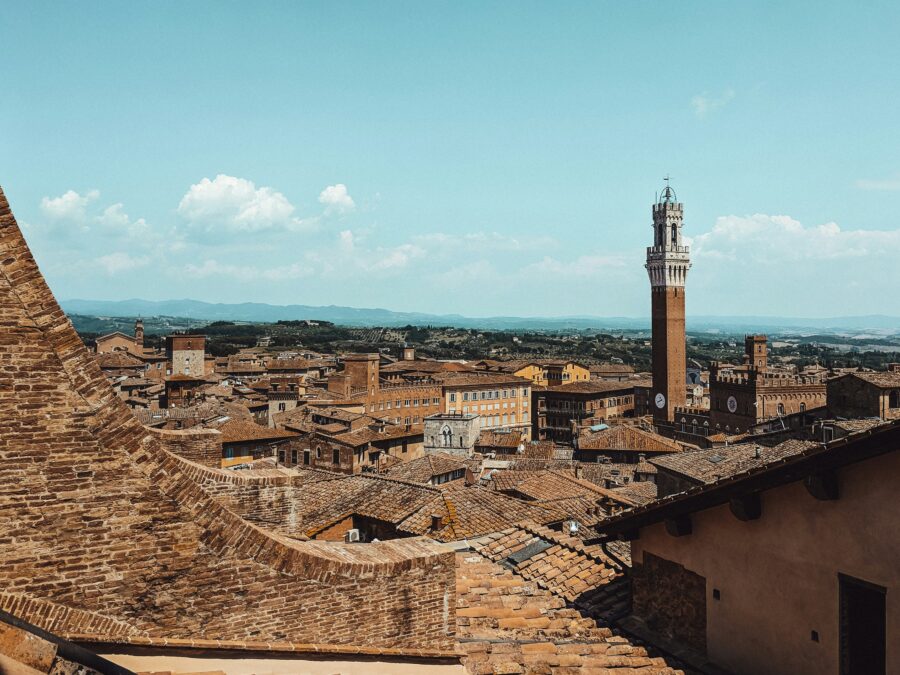
Siena sits about 75 kilometers south of Florence. The bus ride takes around an hour and a half, which makes Florence a solid day trip. Rome is further—roughly three hours by car or bus—so it’s a bit of a trek unless you’re staying overnight.
Perugia is almost equidistant from Florence and Rome—about two and a half hours by train or car from either city. That makes it feel more central if you’re bouncing around Italy. Plus, Assisi is just a quick 30-minute hop away, so you can easily tack on another destination.
If you’re flying, Florence and Rome are your best bets for Siena. For Perugia, you might get lucky with a direct flight into its small airport, but honestly, most people still connect through the bigger cities. Checking Skyscanner or Expedia helps you find the fastest route.
So, Siena feels tucked away in Tuscany, while Perugia’s spot in Umbria makes it more practical if you’re city-hopping across Italy.
Cultural Atmosphere
Siena and Perugia both ooze Italian character, but their moods couldn’t be more different. One city leans hard into tradition and pageantry; the other thrives on student buzz and a mix of cultures.
Local Attitudes and Hospitality
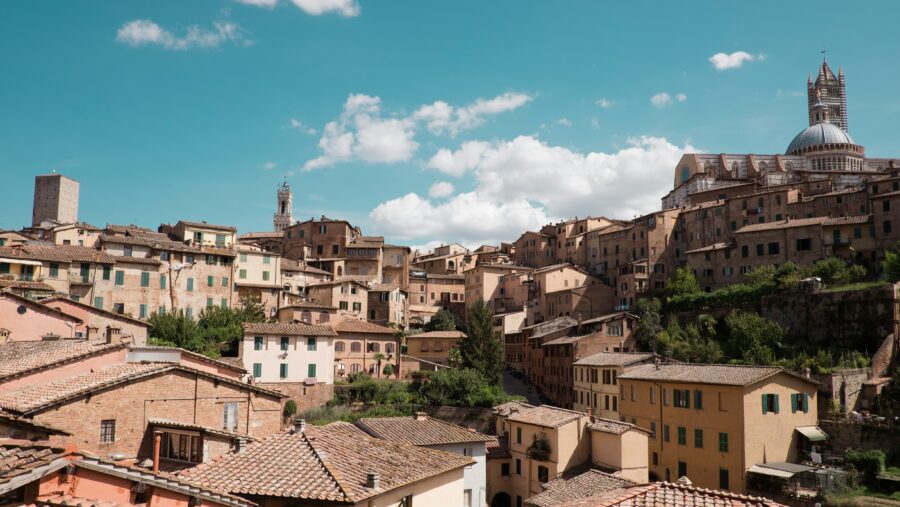
In Siena, you’ll instantly notice the locals’ pride, especially when it comes to their neighborhoods, or contrade. These districts are more than just lines on a map—they shape friendships, rivalries, and a sense of belonging. If you’re there during the Palio, you’ll see just how deep that runs. People open up, but there’s a formality, a sense of “this is our way.”
Perugia, in contrast, feels open and relaxed. As a university town, it’s used to a steady stream of newcomers from everywhere. Shopkeepers and café staff switch languages without blinking, and conversations just seem to flow. I’ve had strangers in Perugia literally walk me to the right bus stop—little moments like that stick with you.
If you like structure and tradition, Siena’s vibe will draw you in. If you’re after a looser, more welcoming feel, Perugia might just win you over.
Student and Expat Communities
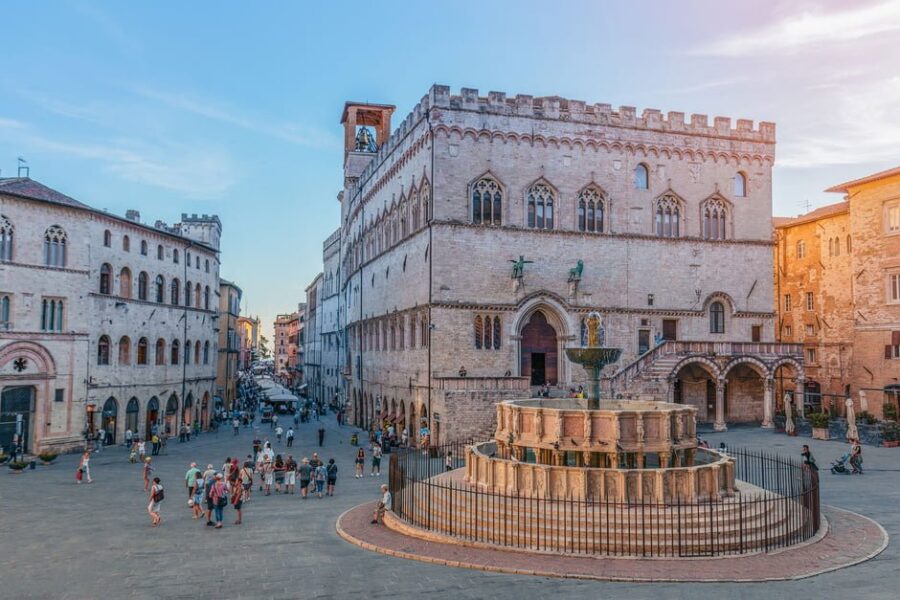
Perugia buzzes with student life. The University for Foreigners pulls in people from all corners of the globe, so you’ll hear a jumble of languages in Piazza IV Novembre. That means the social scene is lively, sometimes a bit chaotic, but almost always friendly. The nightlife runs late, with bars hidden in medieval alleys packed with students.
Siena has its own university, but the student scene is smaller and much less international. You’ll meet more Italian students and fewer expats. The city feels less transient, which is nice if you’re after authentic immersion, but it’s not as easy to find fellow foreigners right away.
For expats, Perugia offers more chances to connect—language schools, cultural events, and casual meetups are everywhere. Siena, on the other hand, is perfect if you want to dive deep into Italian life without the safety net of a big international crowd.
Traditions and Social Life
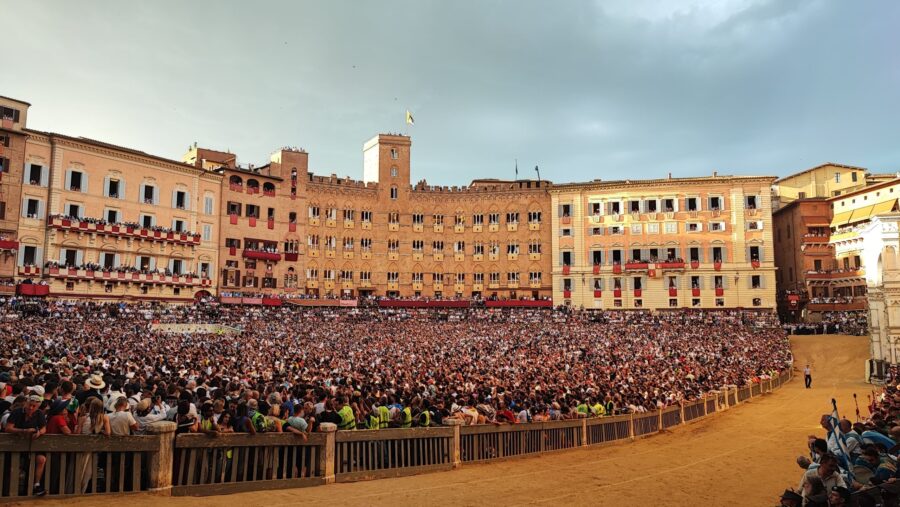
Siena puts tradition on full display. The Palio is the headline event, but contrade host communal dinners, parades, and religious festivals all year. If you stick around, your neighborhood will probably sweep you into the action. Here, tradition isn’t just for tourists—it’s woven into daily life.
Perugia’s traditions often revolve around food and culture instead of neighborhood rivalries. The Umbria Jazz Festival is world-famous and turns the city into one big stage. Eurochocolate celebrates Perugia’s chocolate-making roots, drawing a wild international crowd.
Day to day, Siena’s social life centers on piazzas and contrada events. Perugia’s is all about student-driven nightlife and cultural festivals. One city feels anchored in centuries-old ritual, the other in a lively blend of history and modern energy. Both are real, just in totally different ways.
Historical Significance
Siena and Perugia both hold layers of history that shaped not just themselves but the regions around them. Their medieval roots, stunning architecture, and political influence still echo in the streets and landmarks.
Medieval Heritage
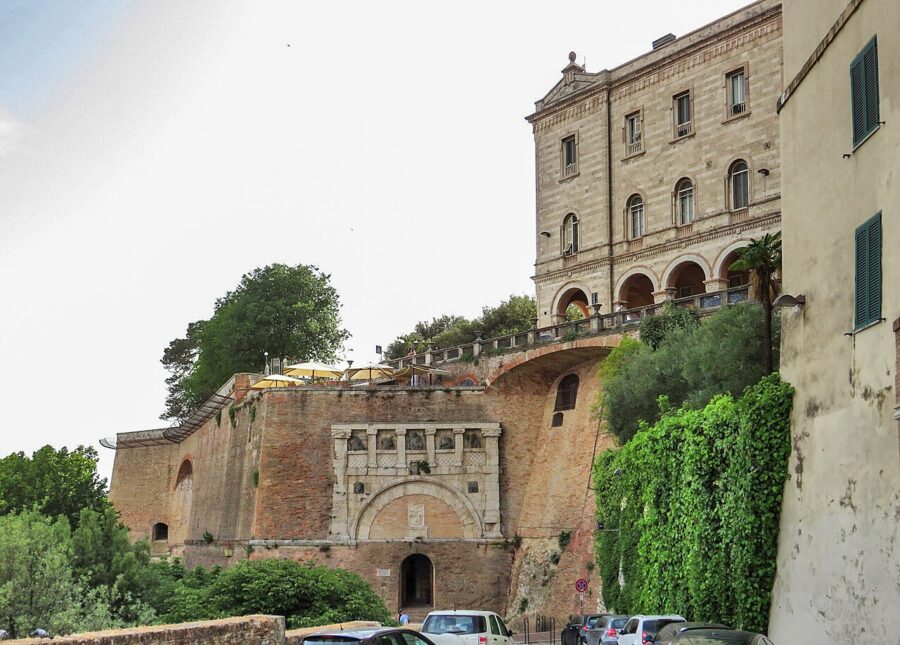
Strolling through Siena feels like falling into the 13th or 14th century. The city thrived in the Middle Ages, fiercely competing with Florence for power and wealth. Contrade still keep medieval traditions alive—most famously, the Palio horse race.
Perugia’s medieval side is a bit different. It blends Etruscan roots with later medieval layers. The city’s underground streets, remnants of the old Rocca Paolina, show how rulers literally built over neighborhoods to keep control. Wandering those passageways, you can almost picture the families who once lived there.
If you love architecture, Siena’s Gothic style stands out in its cathedral and civic buildings. Perugia feels more like a patchwork of eras. Both cities remind you that medieval Italy wasn’t a single story—it was a wild mix of rival cities, each carving its own path.
Notable Landmarks
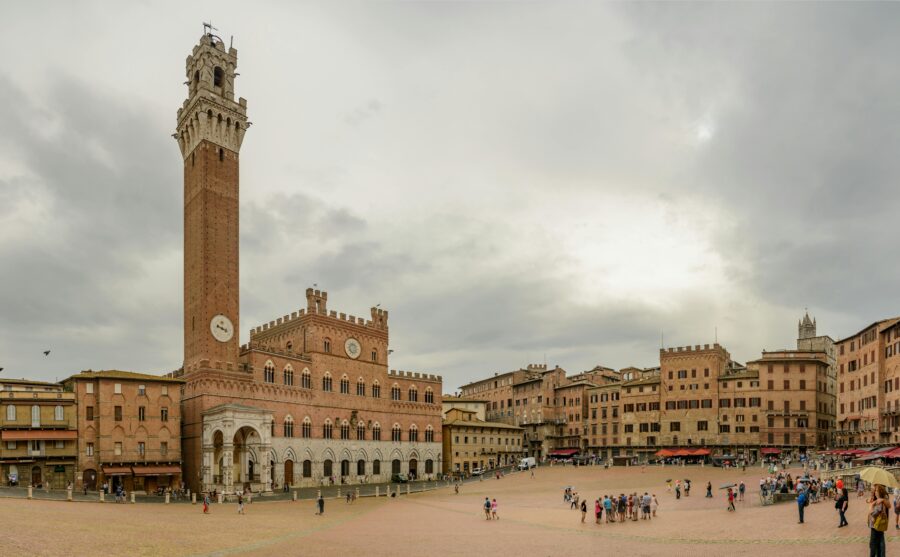
Siena’s Piazza del Campo steals the show. It’s one of Europe’s most beautiful squares, fanning out like a shell, with the Palazzo Pubblico and its towering Torre del Mangia keeping watch. Climb the tower for those sweeping Tuscan views—they’re unreal.
Perugia doesn’t have one obvious centerpiece. Instead, you discover a collection of sites that show off its depth. The Etruscan Arch from the 3rd century BC still stands tall at the city’s entrance. The Palazzo dei Priori houses the Galleria Nazionale dell’Umbria, packed with works by Perugino and Pinturicchio.
Don’t miss the Basilica di San Domenico or the Church of San Severo—they’re quieter than Siena’s cathedral but full of overlooked frescoes. If you like wandering off the main tourist trail, Perugia rewards you with those “wow, I found this!” moments.
Influence on Regional History
Siena shaped Tuscany’s political scene. Its rivalry with Florence set the tone for centuries, and the city’s banking power once reached across Europe. Even now, the contrade traditions show how local identity can define a community.
Perugia played a key role in Umbria, often clashing with papal rulers. The Rocca Paolina fortress, built in the 16th century, was the Pope’s way of stamping control over a rebellious town. Walking through its remains, you can still sense that push-and-pull between independence and outside power.
Both cities left their mark on art, too. Siena’s painters, like Duccio, helped define Gothic art. Perugia produced masters like Perugino, who taught Raphael. Siena feels like a preserved medieval jewel, while Perugia tells a story of layers, struggles, and change.
Art, Architecture, and Attractions
Siena and Perugia both deliver stunning medieval settings, but the experience on the ground? Totally different. Siena goes all in on Gothic charm and grand piazzas. Perugia mixes historic layers with youthful, student-driven energy.
Both cities reward you for slowing down, wandering into churches, museums, or those secret courtyards you stumble across when you least expect it.
Iconic Sights in Siena
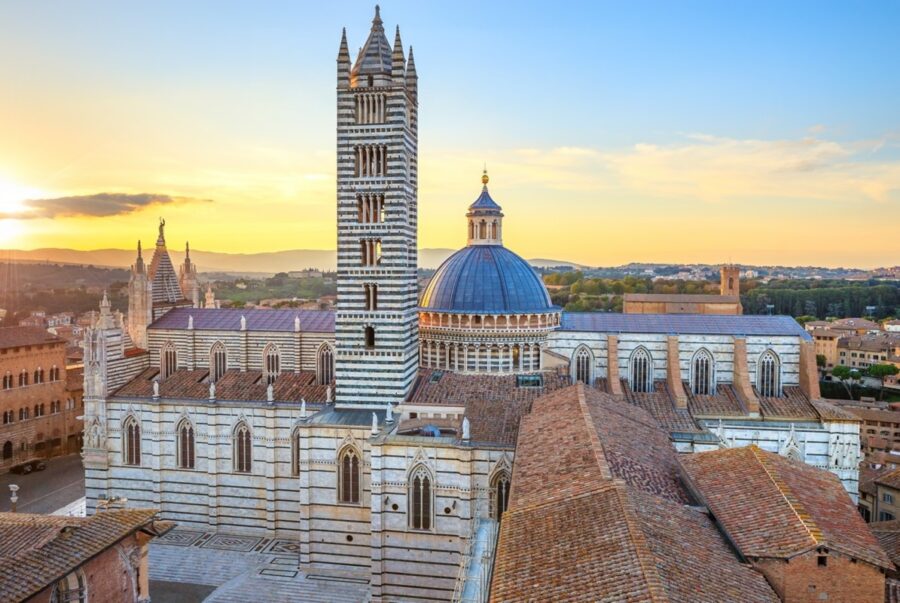
At the heart of Siena sits Piazza del Campo—it’s that shell-shaped square you’ve probably seen in photos. Locals and travelers gather here for coffee, people-watching, and, of course, the famous Palio horse race.
The gentle slope of the piazza almost turns it into a natural amphitheater. If you grab a seat, you’ll notice the city’s rhythm unfold right in front of you.
You can’t miss the Duomo di Siena. Its black-and-white marble stripes catch the light in a way that’s almost hypnotic. If you’re lucky with timing, you’ll catch the inlaid marble floors uncovered.
Climb up to the Porta del Cielo rooftop walkway for those sweeping views—terracotta rooftops, narrow streets, and the rolling Tuscan hills beyond.
Looking for something quieter? Duck into Santa Maria della Scala. This former hospital-turned-museum hides frescoed halls and winding underground passages.
If you’re the type who likes a bit of guidance (and who isn’t, sometimes?), you can book city tours and activities that help you navigate the Cathedral’s ticket maze and the old town’s hidden corners.
Must-See Spots in Perugia
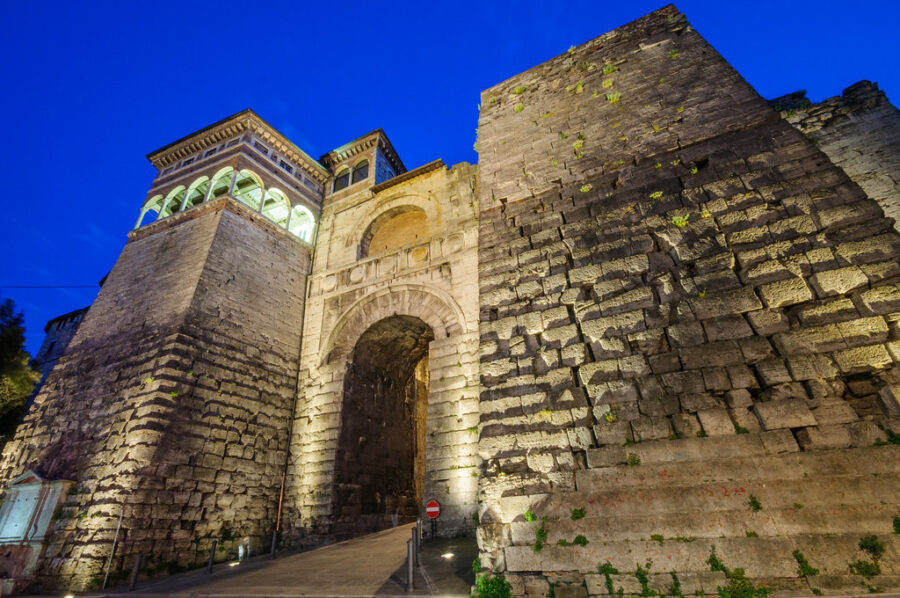
Perugia’s got layers—Etruscan, Roman, medieval—all stacked up in one place. The Etruscan Arch and the underground streets beneath Rocca Paolina remind you just how deep the city’s history runs.
Strolling through those ancient stone corridors, you almost expect to bump into someone from another era.
Piazza IV Novembre anchors the city. The Fontana Maggiore, covered in intricate carvings, sits right in the middle.
Nearby, the Gothic Palazzo dei Priori rises above the square. Step inside to wander its grand halls and check out the art displays upstairs.
Since Perugia is a university city, the center buzzes with life. Street musicians, markets, and impromptu festivals pop up all the time.
If you want to really make the most of your visit, pre-booking attractions and tours definitely helps—otherwise, you might just end up people-watching in the piazzas (not a bad way to spend a day, honestly).
Museums and Galleries
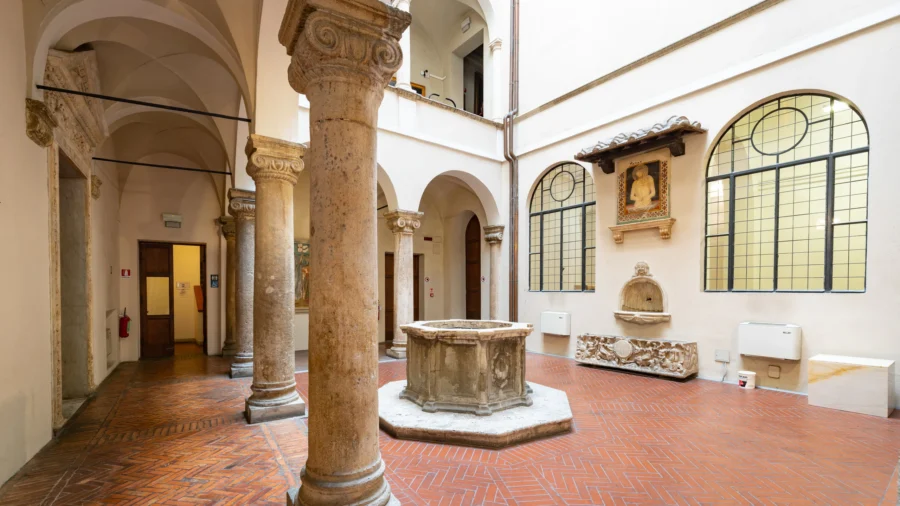
Siena’s Pinacoteca Nazionale houses one of the top collections of Sienese painting. If you love Gothic art, you’ll see how Siena’s style stands apart from Florence’s Renaissance.
Perugia’s Galleria Nazionale dell’Umbria is the city’s showstopper gallery. It fills the Palazzo dei Priori with medieval altarpieces and Renaissance gems. Even if you’re not an art buff, wandering the building is a treat.
You’ll also find smaller specialty museums in both cities. Siena’s Palazzo Pubblico doubles as a civic museum, with frescoes offering a peek into medieval politics.
In Perugia, quirky spots like the National Archaeological Museum of Umbria dig deep into the city’s Etruscan roots. Sometimes you’ll have these places almost to yourself—those moments always feel special, don’t they?
Food and Nightlife
You’ll never go hungry (or thirsty) in Siena or Perugia, but the vibe shifts dramatically from one city to the other. Siena moves at a slower, more traditional pace, while Perugia’s youthful crowd keeps things buzzing long after dark.
Local Cuisine
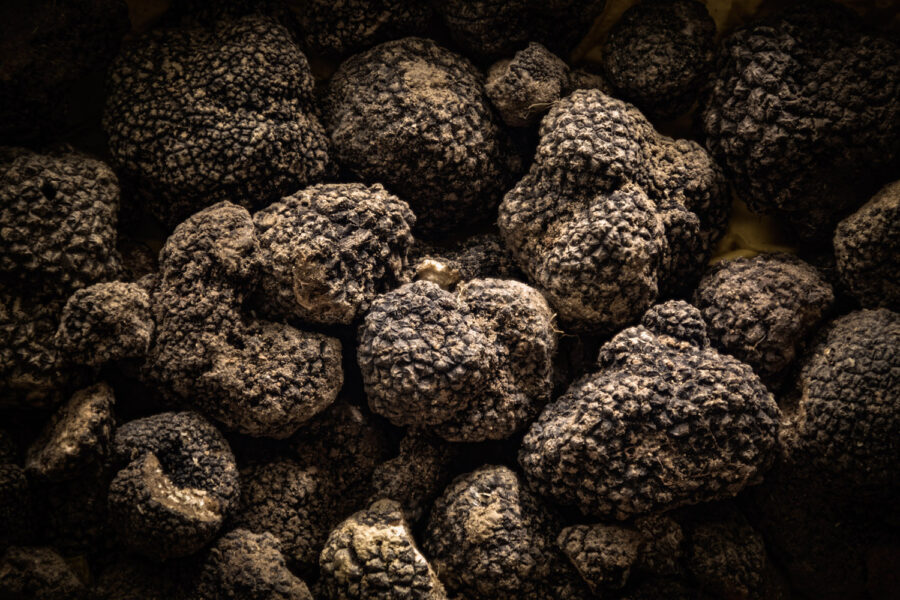
In Siena, food is pure Tuscan comfort. Try pici pasta—thick, hand-rolled noodles—topped with garlicky tomato sauce or wild boar ragù.
Hearty meat dishes like bistecca alla fiorentina and rich stews fill most menus. And don’t skip the sweets. The famous panforte, a dense fruit-and-nut cake, has been a Siena staple for centuries.
Perugia’s kitchen leans on Umbrian truffles, lentils, and all things pork. Some of Italy’s best cured meats come from this region, and they show up in simple, flavor-packed dishes.
And then there’s chocolate—Perugia’s Baci are legendary. I still remember buying a little bag at a corner shop and, let’s be honest, eating them all before I left the piazza.
Wine? Oh, absolutely. Siena sits right in Chianti country, so Chianti Classico is everywhere.
Perugia pours more Umbrian wines like Sagrantino di Montefalco, which packs a bold, earthy punch. If you’re traveling for food, keep an eye out for cheap tickets—it’s always better to spend your savings on meals than airfare, right?
Bars and Nightlife Scene
Siena’s nightlife is mellow. Locals gather in Piazza del Campo, sipping wine or coffee under the stars.
A few wine bars hide in the side streets, but honestly, the city winds down early. If you love quiet evenings, this is your place.
Perugia? Whole different scene. The university crowd keeps the city awake long into the night. Pubs, cocktail bars, and live music venues cluster around the historic center.
On some nights, the streets feel like one rolling party, with students drifting from bar to bar.
If jazz is your thing, Perugia’s Umbria Jazz Festival in July is legendary. Even when the festival’s not on, you’ll stumble into small gigs tucked into bars or piazzas.
One night, I ended up in a tiny underground bar where a local band played funk until 2 a.m.—it’s the sort of spot you never find in a guidebook, and that’s exactly why it’s unforgettable.
So, if you’re after relaxed evenings and good conversation, Siena’s your match. If you want energy, music, and late-night adventures, Perugia’s got you covered.
Events and Festivals
Siena and Perugia both know how to throw a party, but their styles couldn’t be more different. Siena leans into medieval tradition, while Perugia fills the streets with music, art, and food nearly year-round.
Palio di Siena
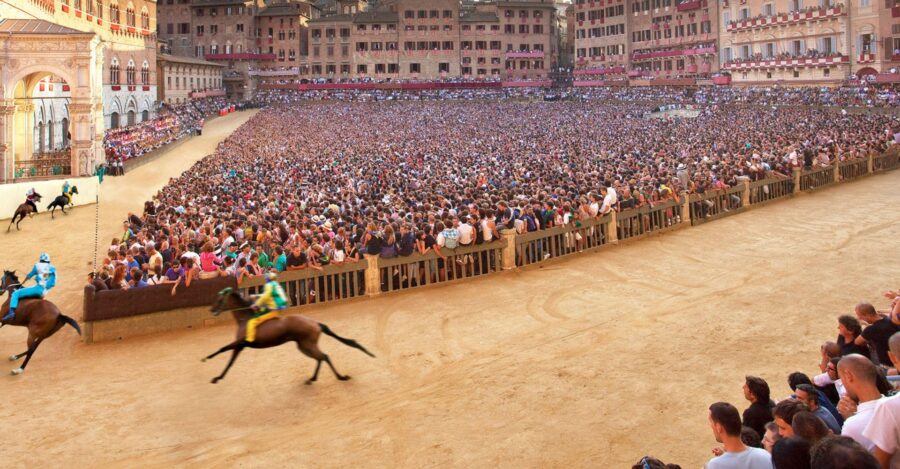
Ever seen those wild photos of horses thundering around a packed piazza? That’s the Palio di Siena. The city hosts it twice a year, on July 2 and August 16, right in Piazza del Campo.
The race barely lasts 90 seconds, but the anticipation and drama build for days. Each contrada (neighborhood) fields its own horse and rider, and the rivalry runs deep.
You’ll spot flags, parades in full medieval regalia, and hear drums echoing through the narrow lanes.
Bleacher tickets can be pricey, but you can stand in the center for free—just be ready to wait in the heat for hours. I’ve squeezed in shoulder-to-shoulder with locals, and the energy is wild. It’s chaotic, loud, and, honestly, a little dangerous—but isn’t that part of the thrill?
If you want more details, the official events in Siena calendar is your best friend.
Umbria Jazz Festival
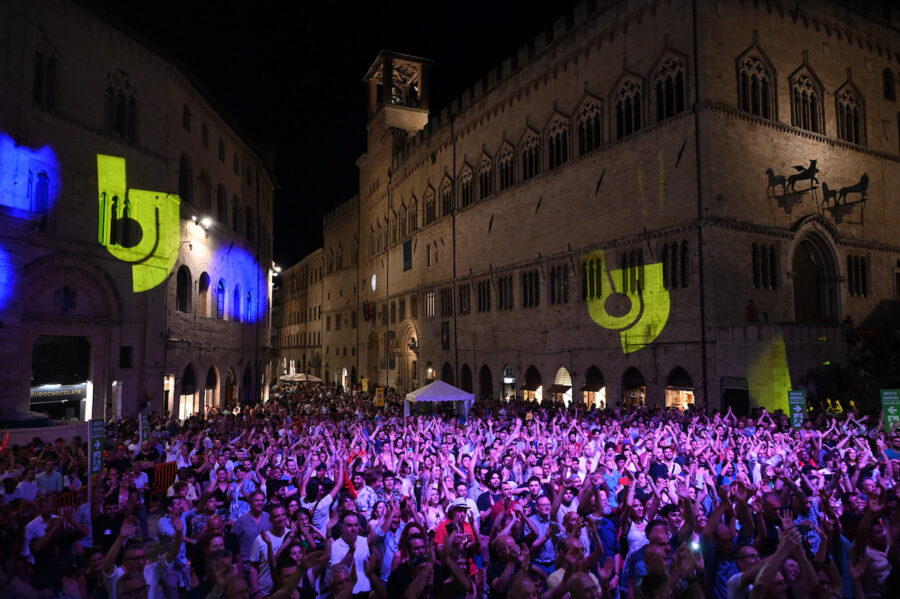
Perugia really shines with the Umbria Jazz Festival, one of Europe’s top jazz events. Every July, the city transforms—concerts spill from theaters into open-air piazzas, and music fills every corner.
Jazz legends, blues icons, and even pop stars have played here. I once wandered into a late-night jam session in a tiny bar off Corso Vannucci, and those spontaneous moments felt just as magical as the big concerts.
Compared to Siena’s Palio, the festival feels laid-back. You can wander, grab a gelato, and stumble into world-class music without a strict plan.
If nightlife is your thing, you’ll love it. The schedule’s always posted on sites like What to do in Perugia and Umbria.
Other Annual Celebrations
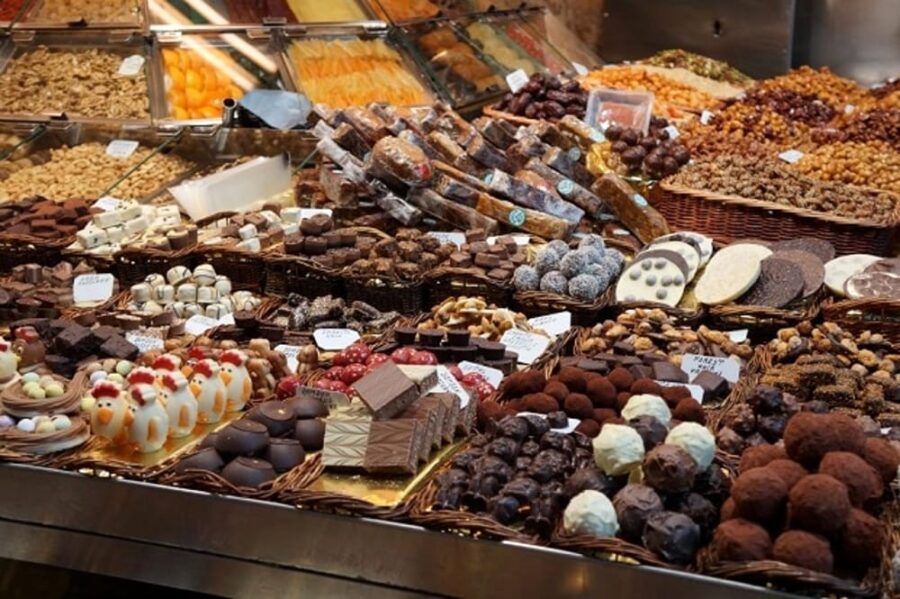
Both cities pack their calendars with smaller festivals. In Perugia, food takes center stage. The Eurochocolate Festival in October is pure heaven if you’ve got a sweet tooth—chocolate sculptures, tastings, and demos line the streets.
Locals stock up on treats, but honestly, it’s just fun to wander and sample. Summer brings endless sagre (food fairs) around Perugia’s province—truffle pasta, wild boar, local wine, and usually a band or two.
Sites like Perugia events keep you in the loop.
Siena, meanwhile, dots its calendar with religious feasts, markets, and cultural events. The medieval market in the Campo, held every few years, feels like a step back in time—costumes, stalls, and all.
If you time your trip with these smaller festivals, you’ll get a closer look at local life. Those are the moments that linger long after you leave.
Living and Studying
Both Siena and Perugia offer that sweet spot—small Italian city charm with a student-focused lifestyle. The real differences? They show up in costs, daily routines, and how you’ll find your people once you settle in.
Cost of Living
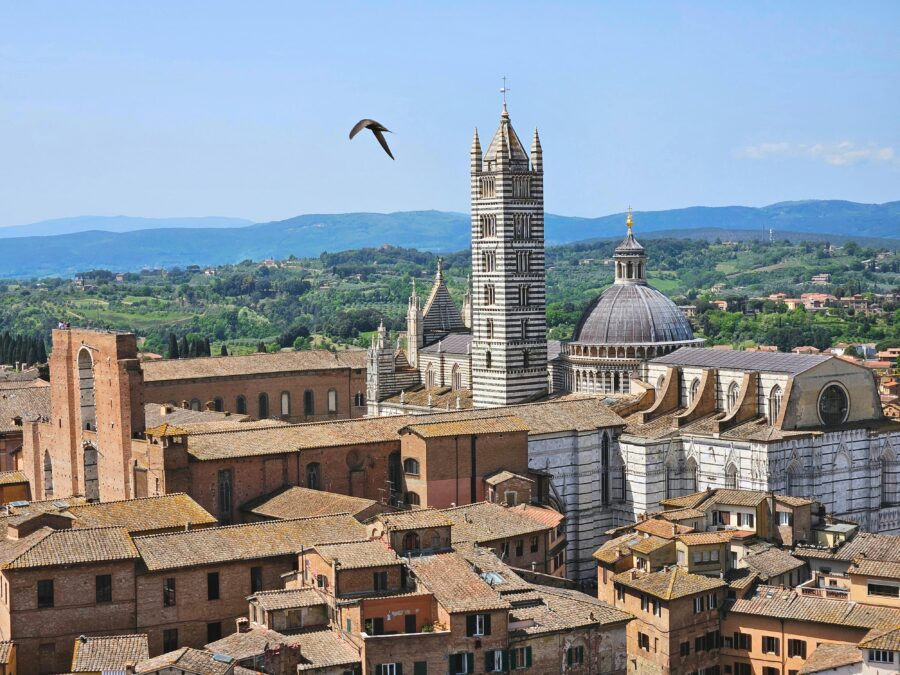
Siena usually costs a bit more, especially for housing in the historic center. Apartments are beautiful but can be tiny (and not cheap). Eating out also runs higher, but you do get top-notch Tuscan food for your euro.
Perugia is easier on the wallet. Rents are lower, groceries cost less, and student bars serve up affordable drinks. The city feels a bit more practical and less polished, which often means more savings.
Don’t forget about healthcare while you’re abroad. Even if you’re healthy, having travel insurance just makes sense. It’s one of those things you hope you never need, but you’ll be glad you have it.
University Life
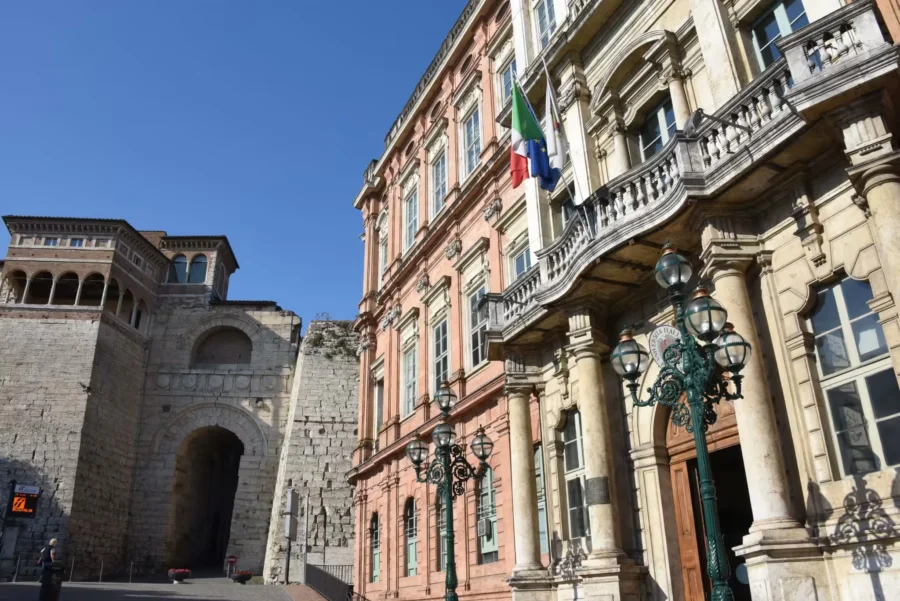
Siena feels intimate, with tradition woven into daily life. The Università per Stranieri in Siena brings in students from all over, but the city’s small enough that you’ll see familiar faces everywhere. Nights out are usually low-key—think Piazza del Campo or a cozy local bar.
Perugia is the opposite. The Università per Stranieri in Perugia is bigger, and the city’s packed with Erasmus students. You’ll find more nightlife, more events, and a bigger international crowd. Some people thrive on that buzz, while others find it overwhelming.
If you crave variety and a packed social calendar, Perugia’s probably your speed. For a slower pace and a close-knit feel, Siena wins points.
Safety and Quality of Life
You’ll feel safe in both cities—especially compared to bigger places like Rome or Naples. Sure, petty theft happens, but it’s not a constant worry. Walking around the center at night feels comfortable, though Perugia’s hills and staircases can wear you out after a long day.
Siena’s calm atmosphere makes it easy to focus on studies or just soak up the city’s beauty. The pace is slower, the streets quieter, and the medieval vibe is strong.
Perugia’s got more movement, more nightlife, and, yes, more noise. That’s exciting, but you’ll want to find your own quiet corners when you need to recharge. Both cities balance history, beauty, and student life in ways that make them genuinely rewarding places to spend time abroad.
Frequently Asked Questions
Traveling between Siena and Perugia gives you a taste of two very different sides of central Italy. You’ll spot contrasts in architecture, food, festivals, and art scenes.
And the routes between them? They wind through some of Tuscany and Umbria’s most underrated landscapes—worth the trip all on their own.
What unique architectural features distinguish the Siena Cathedral from Perugia’s San Lorenzo Cathedral?
The Siena Cathedral just grabs you with those bold black and white marble stripes—honestly, you can spot them from a mile away. Step inside and you’ll find floor mosaics so intricate, I always end up lingering way longer than planned.
And then there’s the Piccolomini Library. It’s just bursting with color, almost dizzying with all those frescoes. You can’t help but pause and stare.
Perugia’s San Lorenzo Cathedral, though, feels like a different world. The front façade was never actually finished, so there’s this raw, patchwork charm to it.
Inside, the vibe is quieter—almost contemplative. The Baroque Chapel of the Holy Ring is a real hidden treasure tucked away from the usual crowds.
In Siena, I always tell people to ditch the main squares and lose themselves in the narrow backstreets. One afternoon, I wandered into Osteria Nonna Gina by pure luck. The pici pasta was hand-rolled right in front of me, and the staff? They chatted like we’d known each other for years.
These tiny trattorias serve up hearty Tuscan classics, and honestly, you can taste the love in every bite.
Perugia, with its strong student scene, buzzes with lively osterias around the historic center. Osteria a Priori stands out for me. They really lean into Umbrian ingredients—lentils from Castelluccio, local cured meats, all that good stuff.
It’s laid-back but you can tell the tradition runs deep. There’s something about the casual atmosphere that just feels right.
What are the best strategies for experiencing the Palio di Siena and Perugia’s Eurochocolate festival like a local?
If you’re going to the Palio, skip the expensive bleachers. Locals squeeze into the center of Piazza del Campo hours before the race, and the buzz is contagious.
Try to connect with a contrada (one of the city’s neighborhoods) ahead of time if you can. That’s where you’ll find the real heart of the event.
Eurochocolate in Perugia? The crowds can get wild, so I always go early in the morning when things are still mellow.
I focus on the smaller artisan stalls instead of the big-name brands, and I never forget a tote bag—trust me, you’ll buy way more chocolate than you thought.
Siena isn’t just about the Campo or the cathedral. The Medicean Fortress is a favorite of mine for a quiet stroll and some seriously underrated views. Plus, it’s free—can’t beat that.
Santa Maria della Scala is another spot worth exploring. It used to be a hospital, but now it’s a museum with these winding underground passages that feel a bit mysterious.
Perugia hides its history beneath your feet. The Rocca Paolina blew me away the first time I wandered through. They built a fortress right over medieval streets, and you can still walk those old passageways today.
It’s like stepping straight into a time machine, and hardly anyone seems to know about it.
What are the most scenic and less-traveled routes to explore between Siena and Perugia by car or bike?
If you’re driving, ditch the main highways and take the winding road through Montepulciano and Lake Trasimeno. Sure, it’s slower, but you’ll pass vineyards, olive groves, and little hill towns that barely see any tourists.
One morning, I stopped for coffee in Castiglione del Lago and somehow ended up staying half the day. That’s just how these places get you.
Cyclists looking for a challenge should tackle the Chianti hills route. Those climbs are no joke, but the scenery—vineyards, stone villages, endless horizons—makes every drop of sweat worth it.
Bring plenty of water, though. Shops are few and far between on those backroads, and you’ll want to stop and soak it all in anyway.
How do the art scenes in Siena and Perugia differ and what off-the-beaten-path galleries should art lovers visit?
Siena’s art? It’s absolutely soaked in its medieval roots. The Pinacoteca Nazionale shows off masterpieces by Duccio and Simone Martini.
Honestly, though, I found the smaller Santa Maria della Scala exhibits way more engaging—they really pull you into how art wove into daily life back then.
Perugia feels different, with its university vibe and a swirl of international students shaping the scene.
Skip the obvious Galleria Nazionale dell’Umbria just once and wander over to Centro Camerale G. Alessi; they surprise you with contemporary shows you won’t see coming.
One afternoon, I stumbled upon a student-run gallery tucked near Via della Viola. It felt raw and experimental, a total breath of fresh air after the city’s classic collections.

